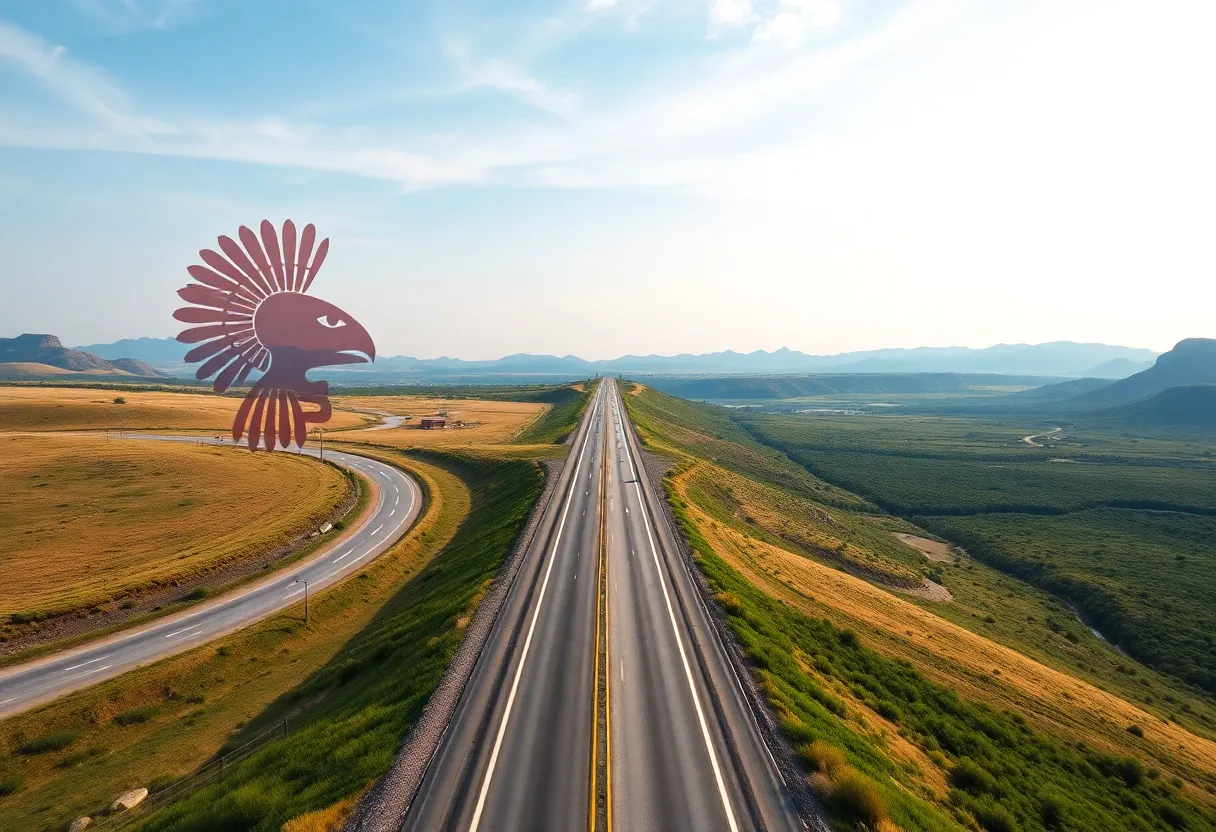New York, October 4, 2025
A federal judge has ruled that the New York State Thruway is illegally operating on land claimed by the Seneca Nation. This decision may lead to significant changes in regional travel and commerce, spotlighting ongoing disputes over indigenous rights and state infrastructure. The ruling could prompt demands for compensation or reconfiguration of the highway, affecting thousands of vehicles that rely on this vital route between Buffalo and western New York destinations.
New York: Federal Judge Rules State Illegally Operating Thruway on Seneca Lands
A federal judge in New York has ruled that the state is illegally operating a portion of the New York State Thruway on lands belonging to the Seneca Nation, a decision that could disrupt regional travel and commerce while spotlighting disputes over indigenous rights. The ruling addresses a key stretch of the highway that crosses territory claimed by the Seneca Nation, an indigenous group with historical ties to the area. This outcome reignites long-standing conflicts between state infrastructure projects and Native American sovereignty, potentially leading to demands for compensation or significant route alterations.
Details of the Ruling and Immediate Implications
The decision focuses on the Thruway’s path through Seneca Nation lands, where the state has maintained the roadway without proper authorization, according to the court’s findings. This section of the Thruway serves as a vital artery for traffic between Buffalo and other western New York destinations, carrying thousands of vehicles daily for both personal and commercial use. Any mandated changes, such as rerouting or financial settlements, could introduce delays, increase transportation costs, and affect local economies reliant on efficient highway access.
Legal experts note that the ruling stems from claims that the state’s control over this land violates federal treaties and indigenous land rights established in the 18th century. The Seneca Nation has argued that the Thruway’s presence constitutes an unlawful encroachment, disrupting traditional land use and cultural sites. While the exact remedies remain unclear, possibilities include monetary compensation to the Nation or a forced reconfiguration of the highway, both of which would require coordination between state officials, federal agencies, and tribal leaders.
Broader Impact on Travel and Business
For businesses in western New York, the ruling poses immediate challenges. The Thruway facilitates the movement of goods, from agricultural products to manufactured items, supporting industries like manufacturing, logistics, and tourism. Disruptions could raise shipping expenses and slow supply chains, particularly for companies operating between Buffalo, Rochester, and points east. Commuters and tourists may face longer travel times if construction or detours become necessary, impacting daily routines and regional economic activity.
The decision also highlights vulnerabilities in infrastructure projects that overlap with indigenous territories. Similar disputes have arisen in other states, where highways or pipelines cross Native lands, leading to lawsuits and negotiations. In this case, the ruling could set a precedent for how states address historical land claims, potentially influencing future developments across the country.
Historical Context of the Dispute
The conflict traces back to treaties signed in the late 1700s, including the Treaty of Canandaigua in 1794, which affirmed the Seneca Nation’s sovereignty over millions of acres in what is now New York. As the state expanded its road network in the mid-20th century, the Thruway was constructed in the 1950s without fully resolving land rights issues. The Seneca Nation has pursued legal action for decades, viewing the highway as a symbol of ongoing encroachments on their autonomy.
Previous court battles have addressed related matters, such as casino revenues and environmental protections, but this ruling marks a significant step in challenging state infrastructure on tribal soil. It underscores the tension between modern development needs and the preservation of indigenous rights, a balance that has eluded resolution for generations.
Potential Next Steps and Ongoing Tensions
Following the ruling, the state may appeal the decision, which could prolong the uncertainty. Negotiations between the Seneca Nation and New York officials are likely, possibly involving federal mediators to explore options like land swaps or easement agreements. Environmental reviews might also come into play if route changes are considered, adding layers of complexity to any resolution.
Advocates for indigenous rights see the decision as a victory that reinforces treaty obligations, while state transportation authorities emphasize the Thruway’s role in economic connectivity. The outcome will likely influence policy discussions on infrastructure planning, ensuring that indigenous concerns are integrated into future projects. As the situation unfolds, stakeholders in western New York brace for changes that could reshape travel patterns and business operations in the region.
This development serves as a reminder of the enduring impact of historical agreements on contemporary issues, urging a reevaluation of how governments manage shared lands. With commerce and mobility at stake, resolving the dispute will require careful diplomacy to honor both legal mandates and practical necessities.
FAQ
What is the main ruling in this case?
A federal judge has ruled that the state of New York is illegally operating a portion of the Thruway on Seneca Nation lands.
What could be the outcomes of this decision?
The decision could lead to compensation demands or route changes, affecting regional travel and commerce.
What does this ruling highlight?
The ruling underscores ongoing tensions between state development and Native American sovereignty.
Which part of the Thruway is affected?
The ruling addresses a key stretch of the highway that crosses territory claimed by the Seneca Nation.
How might businesses be impacted?
Businesses in western New York may face higher shipping costs and slower supply chains due to potential disruptions.
Key Features Chart
| Feature | Description |
|---|---|
| Ruling Scope | Illegal operation of Thruway portion on Seneca Nation lands |
| Potential Outcomes | Compensation demands or route changes |
| Impact Areas | Regional travel and commerce |
| Underlying Issue | Tensions between state development and Native American sovereignty |
| Affected Region | Western New York, key Thruway stretch |




